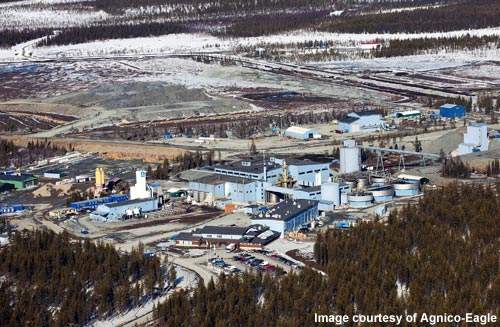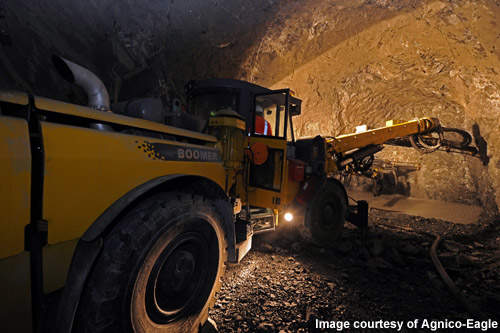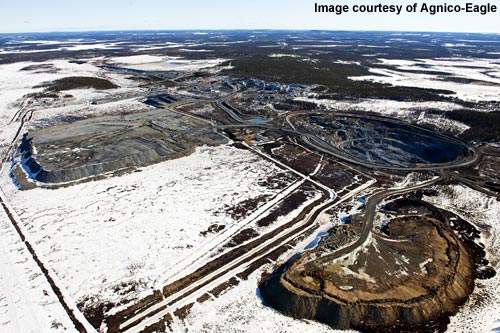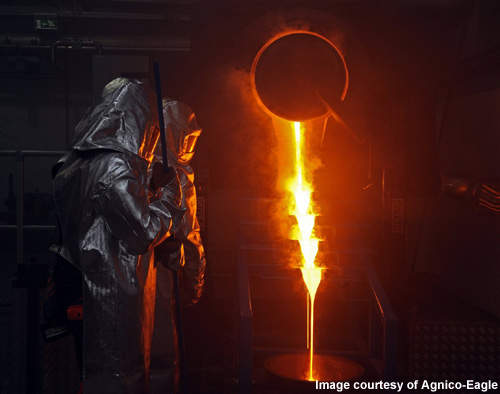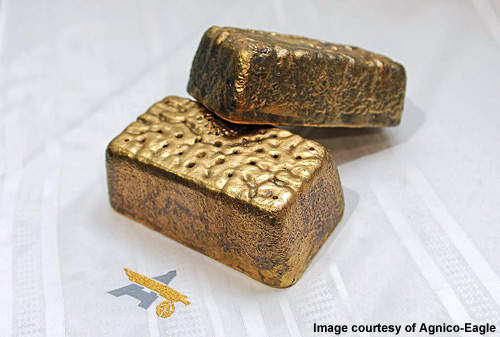The Kittila gold mine is located 900km to the north of Helsinki, Finland, at the Suurikuusikko gold deposit. It was constructed in 2006.
Named after the community that resides nearby, the mine is one of the largest gold-producing mines in Europe. Its commercial production began in May 2009, four months after the first gold was poured (January 2009).
The mine is operated by Agnico-Eagle Mines. The mine is expected to produce 150,000oz of gold in 2011 and an average of 173,000oz of gold a year between 2012 and 2015. It has an estimated lifespan of 15 years (2009-24).
A feasibility study is currently underway to double increase production by 50% to 4,500tpd. The study will look into the expansion of the Kittila mine by sinking a new shaft with an investment of $250m-$300m. The deposit can be expanded both down and along the strike. The study is expected to be completed by the third quarter of 2011.
Kittila geology and reserves
The mine contains an estimated 4Moz of proven gold reserves. The reserves consist of 26Mt of ore with a grade of 4.8g of gold per ton.
The mine was found within the Kittila Greenstone belt, beneath mafic, volcanic and sedimentary rocks. The major rocks are aligned vertically and trend towards north to north-east. Iron and magnesium-rich volcanic rocks are found at the west and east of the belt. Between these two categories of rocks, there is a transitional zone that has a thickness of 10m to 50m.
Referred to as the Surrikuusikko Trend, the zone has a distinctive shape and is composed of several breccias. It is also characterised by heavy gold mineralisation and a change in mineralogy caused by hydrothermal fluids.
The Kittila deposit is along the north-south aspect of the Suurikuusikko Trend. While several mineralised zones have been identified over a strike length of more than 25km, Agnico-Eagle has concentrated on mining only 4.5km of the section that contains gold reserves and resources.
The majority of the gold is found along the structure of sulphide minerals, making it highly difficult to melt. Approximately 75% of gold is present in arsenopyrite minerals and 23% in pyrite minerals. The remaining free gold is found in the outer, oxidised and eroded portions of the minerals. In many places, tiny massive bands containing antimony mineral stibnite intersect the gold deposit.
Mining
Gold is mined through open-pit method. Two open pits, measuring 150m in depth are being initially mined to extract the ore bodies. The pit will eventually be 850m long, 350m wide and 160m deep. Together with waste rock, the ore is mined in 7.5m-wide catch benches using the buffer blasting technique.
To minimise dilution and maximise ore, loading is done selectively through hydraulic excavators into 90t trucks. Ore is transported to the crusher, while the waste rock is sent to the waste disposal area. Every day, nearly 3,000t of ore is supplied into the concentrator for processing.
Processing
The ore from Kittila is processed through flotation, pressure oxidation and carbon-in-leach circuits. Gold is obtained from the solution through electro-winning, before it is poured into dore bars using an electric induction furnace. About 83% of gold is expected to be recovered over the life of the mine.
Future mining
Underground mining commenced in 2010.
Agnico-Eagle plans to undertake surface mining until 2014. A ramp is being developed to enter the underground mine.
The underground mining will be done through open excavation by means of a stope. Every stope will be dug 25m to 40m deep to yield nearly 10,000t of ore. To enable safe excavation of ore in adjacent stopes, each stope will be refilled with cement after every extraction. The ore will be brought to the ground via underground transport trucks through the ramp access system. Supply of sufficient ore to the mill will be ensured by constructing about 4km tunnels every year.

